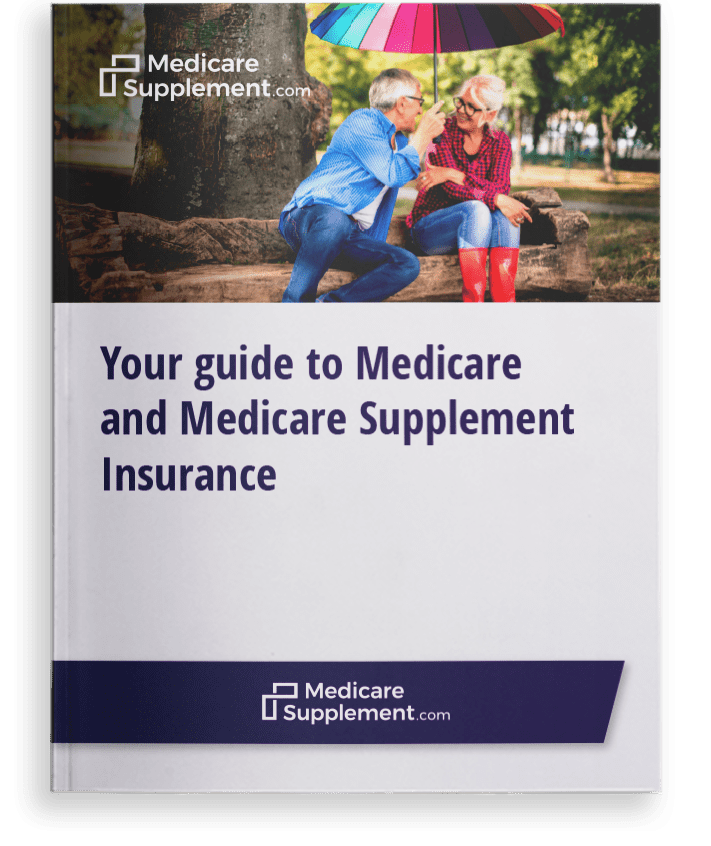Medicare 101
Covering Health Costs for High-Risk Jobs
High-risk jobs can affect your health in a variety of ways. And even if you aren’t working in a demanding physical labor job such as construction or landscaping, you can still get injured or incur long-term health problems while at work.
Jobs like nursing and retail can have a high risk for back injuries, and airline pilots are often exposed to potentially hazardous UV rays. Read on to find out more about common workplace illnesses and injuries and how the cost of your health care can be affected.
Compare Medigap plans in your area.
Find a planOr call now to speak with a licensed insurance agent:
1-800-995-4219
High-Risk Occupational Injuries and Illness Reports
In November of 2021, the U.S. Bureau of Labor Statistics released their Nonfatal Occupational Injuries and Illnesses Requiring Days Away From Work report for 2020. It details incidence reporting across all types of private industry occupations, as well as state and local government jobs. The report concluded that the median number of days away from work in all private industry occupations was 12 days, an increase from 8 days in 2019.

The data from the study revealed a few stark findings:
- Total reported illness cases more than quadrupled to 544,600 cases, up from 127,200 cases in 2019.
- The rate of injury decreased in 2020, with private industry employers reporting a rate of 2.2 cases per 100 FTE workers compared to 2.6 cases in 2019
- 33.2 percent (390,020 cases) were categorized as other diseases due to viruses not elsewhere classified, which includes reported COVID-19-pandemic related illnesses
- Nursing assistants had the highest number of DAFW cases with 96,480, an increase of 68,890 cases (249.7 percent) from 2019
While repetitive motion, overexertion and sprains are the most common factors that lead to injury, other high-risk job factors can lead to injury or illness.
The time needed to recover from an injury often exceeds the days a worker may be able to take off from their job. Often, many older workers and others living on a fixed income can’t afford to lose time off or lost wages. Even with sick day benefits, relieving the financial burden of a workplace injury can be difficult.
Covering the Costs of Medical Bills for Seniors and Disabled Workers
Medicare is available to people age 65 or older, or certain younger people with long-term or chronic disabilities.
It's important to keep in mind that a short-term work-related disability will not qualify you for Medicare benefits. In order to be eligible for Medicare if you are under 65 and disabled, you must receive Social Security Disability Insurance (SSDI) for 24 months.
Exceptions for the 24-month waiting period include individuals diagnosed with Amyotrophic Lateral Scleroris (ALS) or End-Stage Renal Disease.
Medicare can help protect people who work in high-risk jobs by covering essential medical costs and examinations. Medicare Part A covers costs related to hospitalizations and other inpatient care. Medicare Part B covers medical services, like doctor's visits, lab tests, supplies, surgeries and others.
Medicare is a comprehensive health insurance program, but it doesn't pay for everything. Like traditional private health insurance plans, Medicare requires beneficiaries to share the costs of services.
You can expect to pay for deductibles, coinsurance, copayments and other costs for your care.
How Medicare Supplement Insurance (Medigap) Can Help
Medicare Supplement Insurance (also called Medigap) can help pay for some of these out-of-pocket costs. Medigap plans are sold by private insurance companies and are typically available to anyone who receives Medicare Part A and Part B benefits and is age 65 or older.
Some states require Medigap policies be available to Medicare beneficiaries younger than 65 who meet certain disability requirements. Check with your state insurance department to see if Medigap policies are available to people under 65.
With up to 10 standardized Medigap plans available in most states, you can find coverage that meets your needs, even when physical and environmental factors at work increase your chance of illness or injury.
Extended hospital stays, repeat surgeries, checkups and diagnostic exams can add up over time. Listed below are several instances in which the costs of personal injury or disease can exceed the benefits of Original Medicare coverage.

12 Workplace Hazards of High Risk Jobs
Something as common as stocking store shelves poses a risk for injury. Repetitive motions, lifting heavy items every day, operating machinery and a wide range of other workplace duties can easily contribute to broken bones, fractures and concussions. Here are some common occupational hazards and the jobs where they are most likely to occur:
- Asbestos
Professions at risk: Any occupation that manufactures or distributes consumer, industrial, maritime, automotive, scientific or building products. Some jobs in certain schools and hospitals are also at risk.
- Blood Borne Viruses
Professions at risk: Nurses, hospital workers and primary care physicians.
- Electricity
Professions at risk: Maintenance staff, those working at electrical plants, those that operate heavy machinery and construction workers.
- Fire
Professions at risk: Firefighters, food service workers, chemical plant staff, lumber industry workers and any job in dry conditions where flames and electrical equipment pose a potential hazard.
- Flammable or noxious gasses
Professions at risk: Professions that rely on a heated workspace, heated water supplies or cooking and processing products.
- Hazardous Chemicals and Substances
Professions at risk: Cleaners, hairdressers, welders, bakery workers, garage workers, healthcare staff and more.
- Legionella/Legionnaires’ Disease
Professions at risk: The elderly and infirm are highly at risk for this bacteria. Older workers in any profession are at risk.
- Noise
Professions at risk: Construction workers, factory workers, industrial complex workers, airline staff, musicians, power plant workers and more.
- Skin and Respiratory Sensitizers
Professions at risk: Any occupation that works with spray paints, wood dust, flour, grain dust, solder flux, lab animals, glues and resins and other chemicals.
- Slips, Trips and Falls
Professions at risk: Almost any profession.
- Vibration
Professions at risk: Construction, engineering, agriculture, mining and heavy plant operators and drivers.
- Working in Confined Spaces
Professions at risk: Construction, fabrication, welding, painting, flame cutting and occupations that work with chemicals.
Compare Medigap plans in your area.
Find a planOr call now to speak with a licensed insurance agent:
1-800-995-4219
Medigap Plans Can Help Cover High Health Care Costs
Here are a few examples of how purchasing a Medigap plan could be advantageous for a Medicare beneficiary who currently works or previously worked in one of these high-risk occupations:
Profession: Airline pilots
Risk: Cancer
Did you know that “one hour in an airplane cockpit is equivalent to 20 minutes in a UV-A tanning bed in terms of exposure to potentially carcinogenic radiation?”
How could Medigap plans help? Medicare Part B covers annual wellness visits and some preventive care that could detect skin cancers or other medical concerns. These typically come at no cost to the beneficiary.
However, if your doctor orders other tests that don't fall under the "preventive care umbrella" — or if you need a medical or surgical procedure to treat your condition — you can expect to meet your Part B deductible ($240 in 2024) and then pay 20% (coinsurance) of the Medicare-approved amount for the services. These costs can add up.
Each of the 10 standardized Medigap plans provides coverage for your Part B coinsurance. Two of them cover your Part B deductible as well.
Profession: Construction workers
Risk: Broken bones
Incidents involving heavy machinery can cause serious damage to your bones. A piece of equipment falling on a leg can cause fractures, dislocation, splintering and other serious injuries.
How could Medigap plans help? A serious injury on a construction site may not just lead to an expensive outpatient treatment. It could also lead to a hospitalization.
Fortunately, every Medigap plan covers the cost of your Medicare Part A coinsurance for hospital visits. And all but one either partially or fully cover your Part A deductible ($1,632 per benefit period in 2024).
The costs of extended hospital stays can add up into the thousands of dollars, so having a Medigap plan can help you save big.
Profession: Nursing home employees
Risk: Back injuries
Moving patients between beds, tubs and the toilet requires a lot of physical effort. Twisting, turning, pulling, lifting and carrying patients over long periods of time can do serious damage to your posture.
How could Medigap plans help? Medicare Supplement Insurance can help cover your deductibles, copays and coinsurance if you sustain back injuries that require serious inpatient treatment or surgery.
Just because your job involves high risk, it doesn’t mean your finances and health coverage should, too. Call 1-800-995-4219 to speak to a licensed health insurance agent and find out how a Medigap plan could help cover some of your health insurance costs.
Recommended Reading
Read through our other guides to learn more about Medicare and how to continue living an active lifestyle in your later years.

Get a Free Medicare Guide!
Enter your email address and get a free guide to Medicare and Medicare Supplement Insurance, as well as important Medicare news and tips. We promise to never send you spam – just helpful content!
By clicking "Get your guide" you are agreeing to receive emails from MedicareSupplement.com.

